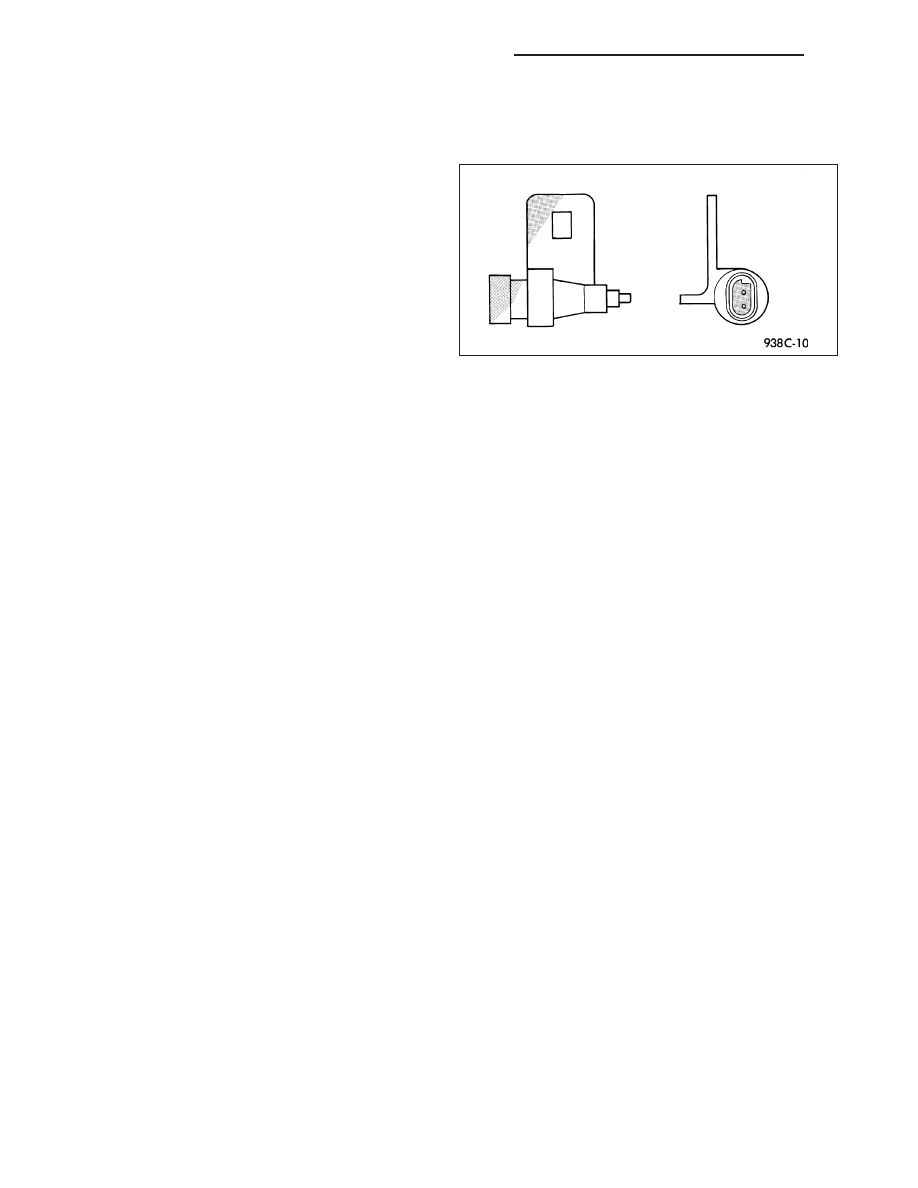Chrysler 300/300 Touring/300C, Dodge Magnum. Manual - part 575

SENSOR-AMBIENT AIR TEMPERATURE
DESCRIPTION
The ambient temperature sensor is a variable resistor
type sensor. it is mounted to the lower front fascia
behind the radiator grille and in front of the engine
compartment.
The ambient temperature sensor cannot be adjusted
or repaired and, if inoperative or damaged, it must be
replaced.
OPERATION
The ambient temperature sensor is a variable resistor that operates on a five-volt reference signal sent by the Front
Control Module (FCM). The resistance in the sensor changes as temperature changes, changing the temperature
sensor signal circuit voltage to the FCM. Based upon the resistance in the sensor, the FCM senses a specific volt-
age on the temperature sensor signal circuit. The FCM then translates the voltage into a temperature reading that
it sent over the Controller Area Network (CAN) data bus to other modules utilizing temperature information.
DIAGNOSIS AND TESTING
AMBIENT TEMPERATURE SENSOR
The temperature function is supported by the ambient temperature sensor, a wiring circuit, and the Front Control
Module (FCM). If any portion of the ambient temperature sensor circuit fails or if the Controller Area Network (CAN)
data bus information is missing, a (– –) will appear in the Electronic Vehicle Information Center (EVIC) display in
place of the temperature. When the sensor is exposed to temperatures above 55° C (130° F), or if the sensor circuit
is shorted, 55° C (130° F) will appear in the EVIC display in place of the temperature. When the sensor is exposed
to temperatures below - 40° C (- 40° F) or if the sensor circuit is open, - 40° C (- 40° F) will appear in the EVIC
display.
The ambient temperature sensor circuit can also be diagnosed using the following Sensor Test, and Sensor Circuit
Test. If the temperature sensor and circuit are confirmed to be OK, but the temperature display is inoperative or
incorrect, test the EVIC operation, (Refer to 8 - ELECTRICAL/OVERHEAD CONSOLE/ELECTRONIC VEHICLE
INFO CENTER - DIAGNOSIS AND TESTING).
SENSOR TEST
1. Turn the ignition switch to the Off position. Disconnect and isolate the battery negative cable. Disconnect the
ambient temperature sensor harness connector.
2. Measure the resistance of the ambient temperature sensor. At - 40° C (- 40° F), the sensor resistance is 336
kilohms. At 55° C (130° F), the sensor resistance is 2.488 kilohms. The sensor resistance should read between
these two values. If OK, refer to Sensor Circuit Test in this group. If not OK, replace the inoperative ambient
temperature sensor.
SENSOR CIRCUIT TEST
Refer to the appropriate wiring information for complete circuit schematic or connector pin-out information.
1. Turn the ignition switch to the Off position. Disconnect and isolate the battery negative cable. Disconnect the wire
harness connectors from the ambient temperature sensor and the FCM.
2. Connect a jumper wire between the two terminals in the body half of the ambient temperature sensor harness
connector.
3. Check for continuity between the sensor return circuit and the ambient temperature sensor signal circuit cavities
of the FCM harness connector. There should be continuity. If OK, go to Step 4. If not OK, repair the open sensor
return circuit or ambient temperature sensor signal circuit to the ambient temperature sensor as required.
8M - 170
OVERHEAD CONSOLE - SERVICE INFORMATION
LX